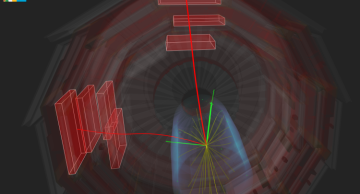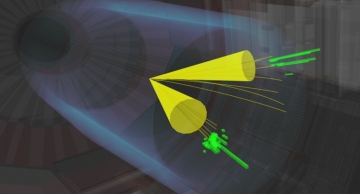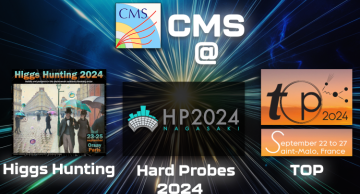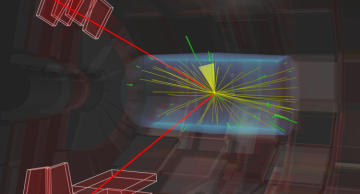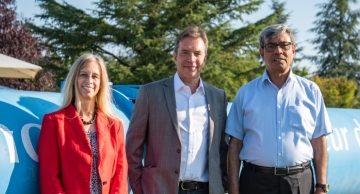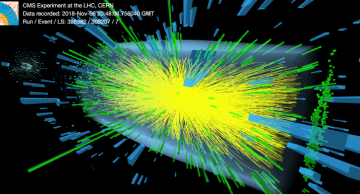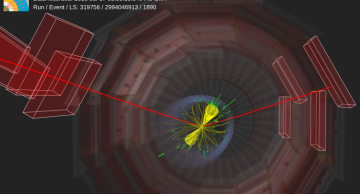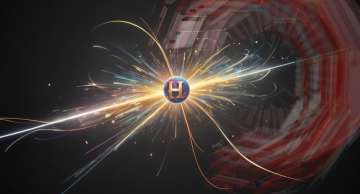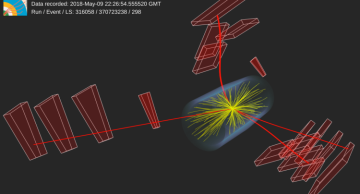Going back to the origins, in a latest result, the CMS experiment rediscovers the Higgs boson and measures its rate of production in the "golden channel", now at the unprecedented centre-of-mass energy of 13.6 TeV.
The discovery of the Higgs…
News
|
maiqbal |
Physics
In a recent result, the CMS experiment measures the production of charmed D0 mesons in collisions of a photon with a heavy lead nucleus for the first time.
Atomic nuclei are made up of protons and neutrons, which in turn are made up of more…
|
maiqbal |
Physics
The CMS Collaboration has announced 14 new results for summer topical conferences – Higgs Hunting 2024, Hard Probes 2024, and TOP 2024.
In HIG-22-013, we present a search for a heavy scalar or pseudoscalar boson decaying to a top quark-antiquark…
|
maiqbal |
Physics
In an extraordinary feat of precision physics, CMS measures the mass of the W boson, and finds it to be in good agreement with the prediction by the Standard Model of particle physics.
In the most precise measurement of its kind ever obtained at the…
|
maiqbal |
Physics
A primary goal of the Large Hadron Collider (LHC) is to hunt for evidence of beyond the Standard Model (BSM) dynamics through deviations from the Standard Model (SM) predictions. If the mass of BSM particles exceeds the energy accessible in…
|
ajafari |
Physics
With the discovery of the Higgs boson in 2012, an important piece in our puzzle to understand the Universe was found. However, there are still many open questions: why is the Higgs boson so light? What is dark matter? How does gravity work at…
|
sohurst |
Collaboration
The CMS collaboration welcomes its tenth management team: the new spokesperson, Gautier Hamel de Monchenault, and the two deputies, Hafeez Hoorani and Anadi Canepa. They will be representing CMS over the next two years (2024-2026).
With more than…
|
maiqbal |
Physics
The Higgs boson is a fascinating elementary particle, and its discovery twelve years ago cemented the standard model (SM) of particle physics as the most accurate description of nature at and below the electroweak energy scale. However, many…
|
maiqbal |
Physics
At the LHC, lead ions are smashed together at extremely high speeds to create a unique state of matter called the quark gluon plasma. Normally, quarks and gluons, such as those that make up lead ions, are confined within protons and neutrons…
|
adelanno |
Physics
In the world of elementary particles, there are twelve generic types of fermions (spin ½ particles): 3 up-type quarks, 3 down-type quarks, 3 charged leptons, and 3 neutrinos. They come in three generations. The number “3” is really a magic…
|
maiqbal |
Physics
Since the discovery of the Higgs boson in 2012, scientists have been on an epic quest to measure its properties and hunt for any clues that might reveal new physics beyond the Standard Model (SM). One of the main studies consists of counting…
|
ajafari |
Physics
The CMS Collaboration at CERN has conducted an analysis to explore the differences between tau leptons and muons, the two heavier cousins of the electron, and both also fundamental particles in the Standard Model (SM) of particle physics.…

